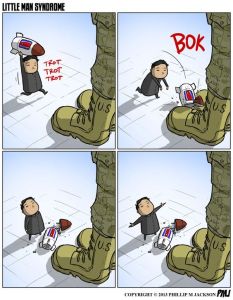Part Five
The Local Level: Policing in America
Let’s clear up one issue quickly. If mental illness (you know, the old “single shooter” trope) were the sole cause of these actions, people from all over the political spectrum would be committing them. Instead, it is the radical right that consistently enacts them. And we should also acknowledge that people with mental illness are much more likely to be victims than perpetrators of violent acts.
Crazies got to be crazy. But as merely unofficial enforcers of the new madness, some of these loonies risked occasionally getting caught and punished. Their sense of permissiveness was not (yet) entirely sanctioned by law – as, we should note, it had been for generations during slavery and Jim Crow. The real work of enacting what I have described as ritual sacrifice fell, as usual, to local police departments, which, we recall, began as Southern slave patrols.
Indeed, the sacrifice of American Dionysus saw a new upsurge, ranging from the sadly ridiculous, such as Police at the National Mall handcuffing three Black teens for selling water on a hot day, 
or a Jacksonville, Florida cop ticketing a Black man for crossing a street without identification, to the fully tragic, such as Arkansas’ announcement that it would execute seven people in eleven days.
The fully tragic. The number of fatal shootings by police officers in the first half of 2017 is nearly identical to the number of shootings recorded during the same time period in 2016 and 2015. That number? 492 people. Police killings are set to reach approximately 1,000 for the third year in a row. The authors of the report write: “These numbers show us that officer-involved shootings are constant over time” (not realizing that in saying this they are indicting Barack Obama as much as Trump).
Another researcher, however, argues that police killings of unarmed people of color increased in Trump’s first six months and names many of the victims: Desmond Phillips, Nana Adomako, Chad Robertson, Raynard Burton, Alteria Woods, etc.
The police had always had basic immunity in the inner city. Ebony Slaughter-Johnsonexplains:
The outcomes of these stories might offer the impression that paid administrative leave is the dominant form of punishment for fatally shooting unarmed people…the prosecution of law enforcement officers is exceedingly rare, due to the fact that they are empowered by law to exercise a wide degree of latitude in using force. Those who are prosecuted need only utter five words that amount to a get-out-of-jail card: “I feared for my life.”
In his new book Mumia Abu-Jamal questions what types of violence are considered hate crimes. He notes the obvious fact that police violence against Black and Brown people is never placed in that category, even as multiple states (over a dozen since the election) have passed “Blue Lives Matter” laws that define the assault or killing of police as hate crimes. Meanwhile, the West Virginia Supreme Court ruled that the state’s hate crime law does notcover anti-gay assaults or any crime committed on the basis of sexual orientation.
In the streets, of course, there has been massive popular reaction to the crimes of the Trump administration, almost all of it limited to trashing of businesses by so-called “anarchists” (many of whom are undoubtedly police provocateurs). According to DHS,however, anger over Trump’s election is a driving force in “domestic terrorist violence.”
Republican lawmakers in at least 18 states introduced or voted on legislation to curb mass protests. Oklahoma passed a new law imposing a minimum $10,000 fine on protesters who might “inhibit” the operations of oil pipelines. It also implicates any organization “found to be a conspirator” with the trespasser, threatening collaborator groups with a fine “ten times” that imposed on the intruder — as much as $1 million.
In this context we should also note that 19 states have enacted laws that penalize the free-speech of those who would support the Boycott, Divest and Sanctions movement against Israel, and that some 43 Senators (including 14 Democrats) led by Chuck Schumer have co-sponsored a bill that would make it a felony for any American to support this international boycott.
But back to the streets. Jeff Session’s clear lack of interest in investigating alleged crimes and shootings by local police let many municipalities, especially Chicago, off the hook. Emboldened, the Baton Rouge police chief refused his own mayor’s request to fire the officer who had killed Alton Sterling, despite an impending lawsuit by Sterling’s family. Indeed, in countless situations such lawsuits were proving to be the only recourse for aggrieved families, and as we all know, few police shooters are ever found guilty.
Most citizens would probably be surprised to learn that armed white males are the category of people that cops kill most often. However, black men (6 percent of the population) make up about a quarter of police shooting victims. They are three times more likely to be fatally shot by officers than white people.
And what about Black women? Glen Ford writes:
…although Black women and girls make up only 13 percent of the U.S. female population, they account for 33 percent of all women killed by police. In raw numbers, white women outnumber Black women by five to one, but police kill nearly as many Black females as they do white females…U.S. police kill more Black women (my italics) every year than the total of all civilians killed annually by their counterparts in western Europe’s largest countries: the UK, France, and Germany.
While the FBI technically tracks fatal police shootings, its database relies on voluntary reports from police departments and only covers cases of officers shooting alleged felons. Last October, James Comey called the FBI’s system of tracking fatal police shootings “embarrassing and ridiculous”. Rachel Glickhouse writes:
There are a few questions for which answers continue to elude us: How many hate crimes happen each year, and why is the record keeping so inadequate? The FBI, which is required to track hate crimes, counts between 5,000 and 6,000 of them annually. But the Bureau of Justice Statistics estimates the total is closer to 250,000. One explanation for the gap is that many victims — more than half, according to a recent estimate — don’t report what happened to them to police. Even if they do, law enforcement agencies aren’t all required to report to the FBI, meaning their reports might never make it into the national tally. The federal government is hardly a model of best practices; many federal agencies don’t report their data, either — even though they’re legally required to do so.
In October 2016, the Department of Justice said it planned to collect more comprehensive data about police shootings. But Sessions, as noted, has called consent decrees a hindrance to law enforcement efforts, and he is most unlikely to follow through on the earlier promise.
Not only has the number of people fatally shot by police remained about the same as in previous years, so has the number of officers indicted for fatal shootings. From 2005 to 2015, just 54 officers were charged, though their brethren killed many thousands during that period, and most were acquitted of all charges. They are agents of a culture of cruelty. Chuck Mertz writes:
As civic culture collapses under the weight of a ruthless mix of casino capitalism and a flight from moral responsibility, crimes against humanity now become normalized in a rush of legislation that produces massive amounts of human suffering and misery while widening the scope of those considered disposable. What is new about the culture of cruelty is that its blend of hate, suffering and spectacle has become normalized. Matters of life and death are now being determined by a neo-fascist government that relies increasingly on punishing apparatuses such as the criminal justice system and budgetary policies that bear down ruthlessly on the poor, undocumented immigrants, Muslims and Black youth.
For more detail on this subject, read Henry Giroux’s article. You might also want to review the issue of the militarization of the police, which has certainly increased under Trump.
Former Black police officer Redditt Hudson writes:
On any given day, in any police department in the nation, 15 percent of officers will do the right thing no matter what is happening. Fifteen percent of officers will abuse their authority at every opportunity. The remaining 70 percent could go either way depending on whom they are working with.
Our concern here is with that second fifteen percent of cops. Who are they, and why are they hired? How does the vetting process, with its sophisticated psychological testing, not identify them early on as sociopaths? Such an inquiry would have to begin with my earlier contention that policing in America began in the South as organized slave patrols. It would end in the present with the new sense of permission since the election.
In late July of this year, almost exactly six months after the inauguration, a Cincinnati judge, after two mistrials, dismissed charges against a white police officer for killing an unarmed black motorist. The story is tragic enough, if common. But what we need to know for this discussion, is that the cop, Ray Tensing, who killed Sam DuBose was wearing a Confederate flag T-shirt under his uniform. A month before, the Hollywood, Florida police department defended a cop who took a selfie as  he hugged pro-Confederate protestors in the street.
he hugged pro-Confederate protestors in the street.
In between the history of slave patrols and the new permissiveness our inquiry would have to acknowledge that white supremacist groups have been infiltrating police departments (as well as the military) for years. Alice Speri of The Intercept quotes from a classified FBI Counterterrorism Policy Guide from April 2015:
…domestic terrorism investigations focused on militia extremists, white supremacist extremists, and sovereign citizen extremists often have identified active links to law enforcement officers.
No centralized recruitment process or set of national standards exists for the 18,000 law enforcement agencies in the United States. In 2006 the FBI become aware of the term “ghost skins,” used among white supremacists to describe “those who avoid overt displays of their beliefs to blend into society and covertly advance white supremacist causes.” At least one skinhead group had encouraged ghost skins to seek employment with law enforcement agencies.
That report appeared after a series of scandals involving local police and sheriff’s departments. In Los Angeles in 1991 members of a local sheriff’s department had formed a neo-Nazi gang and habitually terrorized black and Latino residents. In Chicago, a police detective and rumored KKK member was fired, and eventually prosecuted over charges relating to the torture of at least 120 black men during his decades long career. In Cleveland, a number of police officers had scrawled “racist or Nazi graffiti” throughout their department’s locker rooms. In Texas, two police officers were fired when it was discovered they were Klansmen.
The situation got much worse after Obama’s election, and conservative pressure forced his administration to largely dismantle a DHS unit investigating right-wing extremism. In 2014, the Department of Justice re-established its Domestic Terrorism Task Force, a unit that was created following the Oklahoma City bombing. But for the most part, its efforts focused on homegrown extremists radicalized by foreign groups, rather than on white extremists. Trump further emasculated such efforts.
Crazies get to be crazy, especially when they wear badges, and especially now that Trump and Sessions have encouraged them. The dogs are out, in the streets and in the patrol cars.
Part Six: Mythological Speculations
What the hell is going on? One thing is clear: conventional political analysis can take us only so far. We need to think mythologically.
Vera de Chalambert articulates some popular mythopoetic thinking. In August, 2015, well before Trump’s ascension, artists had projected the image of Kali – the Dark Mother, Hindu “goddess of spiritual death, destruction and resurrection” – onto the Empire State Building, “New York’s brightest and most recognizable symbol and capitalism’s earliest totem…” 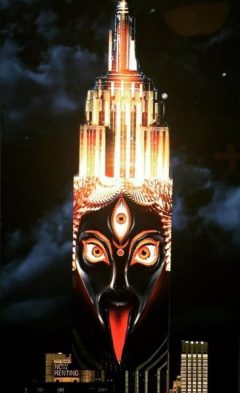 https://madnessatthegates.files.wordpress.com/2017/07/makaliprojectingchangeempirestatebuildingracingextinctionandroidjones01-e1463110709892.jpg?w=91&h=150 91w, https://madnessatthegates.files.wordpress.com/2017/07/makaliprojectingchangeempirestatebuildingracingextinctionandroidjones01-e1463110709892.jpg?w=183&h=300 183w, https://madnessatthegates.files.wordpress.com/2017/07/makaliprojectingchangeempirestatebuildingracingextinctionandroidjones01-e1463110709892.jpg 365w" sizes="(max-width: 240px) 100vw, 240px" />
https://madnessatthegates.files.wordpress.com/2017/07/makaliprojectingchangeempirestatebuildingracingextinctionandroidjones01-e1463110709892.jpg?w=91&h=150 91w, https://madnessatthegates.files.wordpress.com/2017/07/makaliprojectingchangeempirestatebuildingracingextinctionandroidjones01-e1463110709892.jpg?w=183&h=300 183w, https://madnessatthegates.files.wordpress.com/2017/07/makaliprojectingchangeempirestatebuildingracingextinctionandroidjones01-e1463110709892.jpg 365w" sizes="(max-width: 240px) 100vw, 240px" />
“If you are not heartbroken, you are not paying attention!” this project seems to scream from its illustrious rooftop…Fierce protectress of truth, she tells it like it is, she beckons us to dive into the dark, to face the stark reality of the global ecological crisis upon us, and to let heartbreak be the ground from which we awaken and serve…In our bones we all recognize, we are in the death pangs of the old world, and that we make it through is anything but certain…what is needed now is the fierceness of Ma Kali. A holy oracle of change, her medicine is darkness, her initiation is by fire — she calls upon us to rise from our own ashes, to speak truth to power, take on all our shadows and take up the arms that we have, our own, to hold, serve and protect all life as we would our own child…I think that this moment gives us an opportunity for reckoning only if instead of running for the light, we let ourselves go fully into the dark…Receptivity is the great quality of darkness; darkness hosts everything without exception…Climate change is here, whether we believe in it or not. Politically, with the election of Donald Trump, our country and the world have entered a dark night of the soul. We might still live in a culture of shine, greed, glam and white supremacy, but the Dark Feminine has now reemerged into this cycle, and heaven has no fury like the Great Mother scorned.
My colleague Hari Meyers reminds us that one image of Kali is of her dancing on the supine body of the great God Shiva himself. 
But she does not mean to destroy him, only to awaken him. The frightening scene is meant to awaken us, to resurrect our higher consciousness. “Sometimes,” says Hari, “you cannot awaken from a dream until it turns into a nightmare.”
De Chalambert’s article went viral. Astrologer Safron Rossi’s reaction was typical: “What moved me with de Chalambert’s piece was her validation of the falling apart many of us feel and placing it in a
much larger and meaningful frame.”
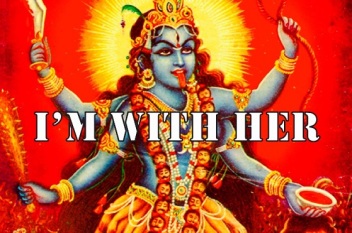 https://madnessatthegates.files.wordpress.com/2017/07/kaliimwithher.jpg?w=150&h=100 150w, https://madnessatthegates.files.wordpress.com/2017/07/kaliimwithher.jpg?w=300&h=199 300w, https://madnessatthegates.files.wordpress.com/2017/07/kaliimwithher.jpg 559w" sizes="(max-width: 352px) 100vw, 352px" />
https://madnessatthegates.files.wordpress.com/2017/07/kaliimwithher.jpg?w=150&h=100 150w, https://madnessatthegates.files.wordpress.com/2017/07/kaliimwithher.jpg?w=300&h=199 300w, https://madnessatthegates.files.wordpress.com/2017/07/kaliimwithher.jpg 559w" sizes="(max-width: 352px) 100vw, 352px" />
I applaud her insights. But we need to go deeper. This is not the first time that someone, moved by a great disaster, suggested that Kali was speaking to the world. After 9/11/2001, some writers suggested that the attacks on the twin towers were a “wake-up call from the Dark Feminine.” But as I wrote in 2009 in Chapter Nine of my book,
The Dark Mother, however, had already been calling on September 10th,when 35,000 children died of malnutrition, as they do every day. With all due respect to the victims of the attack, it is characteristic American narcissism to imply that 9/11 had more personal meaning than the carnage going on in any of the forty-odd wars being waged across the globe.
Eight years later, it seems plain to me that it is also characteristic American innocence to have been in denial for so long. The Great Mother has always been crying for our attention.
Perhaps there are other mythic motifs that can help. One is Pandora’s box. In Greek myth, when Prometheus stole fire from heaven, Zeus took vengeance by presenting Pandora, the first woman, “the all-gifted”, to Prometheus’ brother Epimetheus. Pandora opened a box (actually a jar) containing death and many other evils which were then released into the world. She hastened to close the container, but the whole contents had escaped except for one thing that lay at the bottom – hope.
It’s a useful metaphor. Mark Potok, previously quoted, says, “I think what has happened is that the Trump campaign, in many ways, has kind of ripped the lid off Pandora’s Box, and all of these different kinds of hatreds have escaped, and it’s pretty damn near impossible to get them back into the box.”
Michael Meade also uses the image: “Trump has now opened a Pandora’s Box of personal and political problems that have become a national fiasco and a growing international dilemma.”
It’s all now out of the box, like an explosion of gases from the belly of a bloated, rotting whale, and we really don’t know if hope remains inside.
I’m rummaging through world mythology because perhaps we need as many images as possible now. Another one is the Tower.

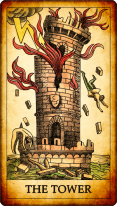
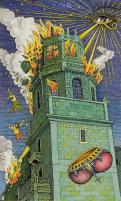
It had obvious relevance in 2001, and now with Kali’s image on the Empire State Building and Trump’s association with towers, it maintains that imaginal significance. I wrote about it in Chapter Nine:
Many mythologies share the theme of cataclysm (“wash down”) or catastrophe (“turn down”) and tell of disasters such as earthquakes, floods and eruptions. The Judeo-Christian tradition perceives such events as divine punishment resulting from sexual transgressions and reversions to Paganism. The Greeks saw these events as retribution (nemesis) for excessive arrogance and pride (hubris), which is symbolized as towers that reach toward heaven in Egyptian, Mexican, Assamese, Burmese and Native American myths.
The Tower card appears in the European Tarot Deck as a medieval castle, a Babylonian ziggurat, a skyscraper, a prison — or the White House. It collapses in flames from an earthquake or lightning bolt. Sometimes human bodies fall from it, or pieces of it strike the king. Psychologically, it represents the ego defenses that hide our incomplete selves. The Tower, writes Shanti Fader, is a place of “fear and jealous, possessive pride, designed to keep out love…” Recall Pentheus (in The Bacchae) bellowing, “I shall order every gate in every tower to be bolted tight.”…It also represents knowledge swollen out of control, like the Tower of Babel.
Feder sees the Tarot’s destruction of the Tower as “clearing away…outmoded ideas and patterns…which may well have served a purpose at one time.” The Tower is like the Hero, who produces and achieves in the first half of life, but must die into something greater in the second half. Dionysus concludes The Bacchae implying that if uninitiated boy-kings awaken, they might “have an ally…in the son of Zeus.”
Part Seven: Dionysus, and a Worm
I’m going to stick with one of the themes of my book – the return of the repressed – and my most compelling image: Dionysus, the Loosener.
What is the knocking?
What is the knocking at the door in the night?
It is somebody wants to do us harm.
No, no, it is the three strange angels.
Admit them, admit them.
– D. H. Lawrence
I am pregnant with murder.
The pains are coming faster now,
and not all your anesthetics
nor even my own screams
can stop them.
– Robin Morgan
From Chapter Four of my book:
The god is angry because he has been dishonored. The longer something has been repressed, the more insistent it is, the greater the resistance by centers of power (ruling elites) or of consciousness (the ego). This is why Dionysus has cast his spell on the women, why Pentheus fights him so absolutely, and why his destruction is so savage…Like Pentheus, we can ignore the appearance of an archetype. But it never totally disappears. It returns, charged with more energy, but manifesting in a more primitive way. What was a human impulse can become monstrous. Repressed diversity ultimately reappears as psychopathology, as madness at the gates.
And who is the agent of this return of the repressed? Dionysus, of course. In his literal form as alcohol he is Lusios, the Loosener, “destroyer of the household.” Lusios is related to analysis, which means setting free. A catalyst is a chemical agent that precipitates a process without itself being changed. The destruction of Pentheus’ palace represents Lusios shaking the foundations of identity (personal or collective).
Every night, every tavern and most dance venues are places where people go with the express intention, conscious or unconscious, of receiving permission from the God of madness and ecstasy to let go and let it all out. It can come out as joining the crowd at the ubiquitous TV set and cheering for the home team. More rarely, it can come out as truth-telling, spoken by those who otherwise cannot ignore their inhibitions.
Or it can come out in the release of pent-up violence. For some, the knowledge that others will likely intervene and “break up” a fight before it gets out of hand is part of the expectation that even the letting go can happen in a certain kind of safe or ritualized context.
Why is this “loosening” so tempting? Why do we crave release? Classicist E.R. Dodds explained that Dionysus “…enables you for a short time to stop being yourself…” He could lift the burden of individual responsibility from his devotees. In the process, their sense of being isolated egos dissolved.
The ecstatic mode of spirituality is both ancient and widespread. All Greek initiation festivals included dancing. Indigenous worship everywhere was bodily celebration, a dance of the entire community. In many African languages, the words for music and dance are identical. A Haitian proverb says, “White people go to church to speak about God. We dance in the temple and become God.”
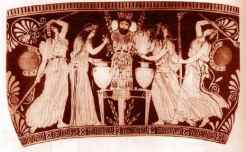 https://madnessatthegates.files.wordpress.com/2017/07/dionysos2.jpg?w=150&h=93 150w, https://madnessatthegates.files.wordpress.com/2017/07/dionysos2.jpg?w=300&h=186 300w, https://madnessatthegates.files.wordpress.com/2017/07/dionysos2.jpg 465w" sizes="(max-width: 246px) 100vw, 246px" />
https://madnessatthegates.files.wordpress.com/2017/07/dionysos2.jpg?w=150&h=93 150w, https://madnessatthegates.files.wordpress.com/2017/07/dionysos2.jpg?w=300&h=186 300w, https://madnessatthegates.files.wordpress.com/2017/07/dionysos2.jpg 465w" sizes="(max-width: 246px) 100vw, 246px" />
If this need was so strong in pre-Classical Greece, how much more so in our day when religious fundamentalism, political fear mongering and the constraints of the corporate work environment herd us toward a mind-numbing conformism that we all know? No wonder we crave regular access to the local tavern as well as those occasional escapes to New Orleans, Las Vegas and Spring Break party towns.
Here I must confess to a certain naiveté. In much of my writing I’ve tended to see the return of the repressed as a good thing, as in liberated sexuality, as the return of the Goddess or as political revolution. And I still think that way – in the long run. But perhaps I’ve been ignoring my own text: What was a human impulse can become monstrous.
And one of the most welcome – and most dangerous – characteristics of demagogues from Stalin, Mussolini and Hitler to Reagan to the architects of the Rwandan and Armenian holocausts to Trump has been their ability to “lift the burden of individual responsibility” from their followers, to dissolve their isolated egos. It is to grant them permission to let out the dogs of their most repressed, violent fantasies that had previously been held in control by superficial notions such as goodness, fair play, tolerance, rationality, justice – and democracy.
For four hundred years, white American males have attempted to cover up the continual, massive evidence of their detached, racialized, genocidal violence with the story of their own goodness and innocence. Elites have always managed to keep the lid on the worst of our lesser natures, except of course for our regular wars on foreign ground and the race riots that inevitably follow them at home.
This gambit has generally worked, at least for the winners and those who identified with them.
But sometime around 1975, and accelerating through the next generation, the jobs that gave them the good life and a sense of belonging disappeared. Credit, two-income families, fundamentalism and the vicarious thrills of celebrity culture and militarism carried them for one more generation until the credit maxed out. By the Obama years, it became increasingly difficult to conceal the fact that fewer and fewer white people (let alone people of color) could claim membership in the tribe. And we remember that in American mythology and theology, we hold to the crazy assumption that our suffering is our own fault, not that of a capitalistic system, that the only alternative to the winner/hero is the loser/victim.
The opioid epidemic controlled – and killed – millions of them in this generation. The rest were ready to explode, to turn their self-hatred upon some localized scapegoats. Their patience and their sense of self-control had been stretched as far as possible, and they yearned for the advent of a loosener who would grant them permission to dump it all out, to let slip the dogs of domestic war.
The dogs of international war will almost certainly follow.
I really regret that this seems to be the most relevant mythic image right now. We recall that Pentheus’ own mother and aunts lead the crazed maenads in murdering and dismembering him. 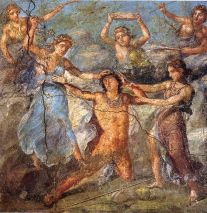 With that image in mind, we note that 53% of white women voted for Trump, despite (or perhaps because of) his crude misogyny, and that, ironically, the most common targets of the public hated he let loose have been veiled women, the very image of repression.
With that image in mind, we note that 53% of white women voted for Trump, despite (or perhaps because of) his crude misogyny, and that, ironically, the most common targets of the public hated he let loose have been veiled women, the very image of repression.
The madness will dissipate; such eruptions always do. That is, until the pressure builds up again, or, as in Germany, the resulting destruction overwhelms even national mythologies of exceptionalism. Otherwise, myths do take a long time to change.
And what does this mean for those of us who aspire to being elders who might prepare younger people to step up and become leaders after this society crashes and burns? Are attempts at initiation rituals ultimately meaningless if they don’t involve the risk of showing the young their darkest potentials along with their brightest?
Meade suggests that we view Trump not simply as the problem, but more as a symptom of a greater illness and reminds us that the word crisis comes from a Greek word that refers to a turning point in a disease.
Thus, a genuine crisis signifies a change for better or for worse…The national crisis created by…a pathological presidency can become an opportunity to grow the character of the country and bring a deeper sense of human decency and national integrity.
Trump is a provocateur. But Jung said that the soul is teleological, always moving toward integration. Back to The Bacchae: We carelessly leave the gates unlocked for the Mystery to enter and do its destructive – and perhaps reconstructive – work. We see this when Pentheus orders his henchmen to find Dionysus:
Go, someone, this instant,
to the place where this prophet prophesies.
Pry it up with crowbars, heave it over,
upside down; demolish everything you see…
That will provoke him more than anything.
“Provoke” (from vocare, to call) is marvelously appropriate. At some level Pentheus can choose. He can invoke or evoke his own Dionysian nature, or he can innocently project it outwards, provoking its expression somewhere else. Dionysus says:
If I were you, I would offer him (myself, actually) a sacrifice, not rage and kick against necessity…Friend, you can still save the situation.
“If I were you,” indeed. The two cousins represent mirror opposites within the psyche. Pentheus, in his desperate machismo, speaks his last line before the spell is cast:
Bring my armor, someone.
And you (Dionysus) stop talking.
Now he has provoked the god, called him out, and declared his willingness to engage the mystery. Here a break in the poetic meter of the text occurs that emphasizes the significance of Pentheus’ fateful statement. When Dionysus responds with: “Ahhh…Wait! …Would you like to see their revels…?” he provokes Pentheus’ unconscious sexual voyeurism. Dionysus, masked as a priest, will send Pentheus to his destruction masked as a Maenad. After loosening the gates of the city, he loosens the boundaries of Pentheus’ sanity.
The repressed energies turn deadly. Pentheus might have humbled himself before this immense natural force that was willing to meet him halfway. The Loosener, who – if invited – would have helped his cousin drop his armor and relax, who would rather lie drunk among his maidens, now appears as the Lord of Death. Dionysus had come to refute lies told by his two aunts. Now they and Pentheus’ own mother destroy him. The three sisters, universal symbols of the Great Mother – her again – reveal her deadly features instead of her nurturing face.
What does it mean to be an archetypal story? One thing it means is that it lives in potential within each of us, and that each of us – each nation – may potentially enact it. But our contemporary loosener/provocateur can only permit us to show our worst potentials, not our better angels.
For the present, this means fully accepting the nauseating truth that Trump is us – that he embodies the dark side of a toxic, national mythology that exists in the psyche of every American, just as the Teutonic darkness dwelt in every German in 1933. And this brings me to a final, Nordic myth, the Lindworm.
The king and queen want a child, but cannot produce one. An old wise woman tells the queen that in order to conceive she must breathe her desires into a glass and place it on the ground. From that ground, two flowers will grow: one red, one white. The queen must eat the white flower; under no circumstances must she eat the red one. Then she will bear a healthy child. Of course, she eats the red flower too. She duly becomes pregnant, but gives birth to a black serpent, which she immediately flings in horror through the window and into the forest. 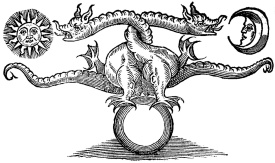
People act as if nothing has happened, and a healthy baby boy is soon born. But when the prince becomes a man, he meets his serpent brother again in the wood, and the huge black snake comes back into the kingdom to wreak terrible damage.
This strange and disturbing story suggests that what you exile will come back to bite you, three times as big and twice as angry. What you push away will eventually return, and you will have to deal with the consequences. But this version of return of the repressed offers a way out that The Bacchae doesn’t.
Paul Kingsnorth suggests that 2016 was
…the year the exiled serpent returned. Many things that were banned from the public conversation – many feelings, ideas and worldviews which were pushed under, thrown into the forest, deemed taboo, cast out of the public realm – have slithered back into the castle, angry at their rejection. Some people thought they were dead, but it doesn’t work like that. Dark twins can’t be destroyed; terms must be met, agreements made. The serpent must be accommodated…2016, from a small, localised perspective here in the wealthy democracies of the Western hemisphere, can look like the year that everything changed. But it isn’t, not really. This is not the year that the queen gave birth to the serpent, and it certainly isn’t the year that she first ate the flower. That happened a long time ago. This is the year that the serpent came back out of the forest and into the kingdom, and we got a look at its face. This is the year when we were finally forced to acknowledge what we have exiled…Our stories are cracking: the things we have pretended to believe about the world have turned out not to be true. And the serpent has a lot more damage to do yet…
What Kingsnorth is calling “the year of the snake” I’m calling the Dionysian Moment. The snakes – or the dogs, if you prefer – have heard the news. It’s open hunting season on all of America’s favorite scapegoats, and you don’t need a license.
In the story of the Lindworm, who saves the realm? Neither the King nor the Queen nor a macho hero. The worm (or dragon) demands to be wed before his royal younger brother can be married. Several noble maidens are offered as brides, but the worm eats them all. Finally, a shepherd’s daughter is given to the worm in marriage, seemingly yet another sacrifice, and what a sad ceremony they have. But the crone – that Great Mother again – has trained her, and she arrives wearing ten dresses in layers and carrying a curious collection of milk, lye and a whip.
In the bedroom, the worm tells her to remove her dress, but she insists he shed a skin for each dress she takes off. Eventually, nine Lindworm skins are lying on the floor, each covered with a dress.  Nothing is left of him but an ugly mass of flesh. Then the girl seizes the whip, dips it in the lye, and whips him repeatedly. When he is finally cleansed she bathes him in the fresh milk, drags him onto the bed and embraces him and they fall asleep.
Nothing is left of him but an ugly mass of flesh. Then the girl seizes the whip, dips it in the lye, and whips him repeatedly. When he is finally cleansed she bathes him in the fresh milk, drags him onto the bed and embraces him and they fall asleep.
Next morning, the King and his courtiers enter the room, expecting to see the usual carnage. Instead, they discover the girl, fresh and rosy. Beside her lies not the Lindworm, but a handsome prince. They marry a second time, in a much grander fashion, a real celebration, and the younger brother also finds a royal bride. The Realm has been restored. Kingsnorth writes:
It is a young woman from the margin of the woods, who brings new weapons, and new cunning, into the court, and does the job which the owners of the kingdom had no idea how to do. But she does not kill the serpent. Instead, she reveals its true nature, and in doing so she changes it and everything around it. She forces the court to confront its past, and as a result, the serpent is enfolded again back into the kingdom.
A young woman.
What needs to be folded back into our kingdom? How many worms will crawl out from the sewers and shadows knowing they have permission to speak – and act out – the violence that the myth of American innocence refuses to acknowledge? How many demagogues need to arise before we listen to what they are saying? How many times do they need to up the ante until, exhausted, defenses down, we finally welcome them in, call upon the wisdom of the young and the feminine, offer to remove our own skins and submit to the inevitable chemical washing that might just trump the hatred?




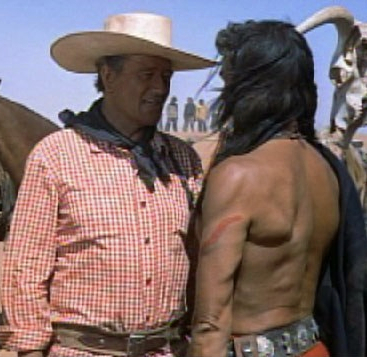
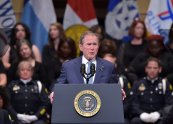 https://madnessatthegates.files.wordpress.com/2017/12/bush-dallas-memorial-speech.jpg?w=346&h=248 346w,
https://madnessatthegates.files.wordpress.com/2017/12/bush-dallas-memorial-speech.jpg?w=346&h=248 346w,  https://madnessatthegates.files.wordpress.com/2017/12/51707036.jpg?w=368&h=246 368w,
https://madnessatthegates.files.wordpress.com/2017/12/51707036.jpg?w=368&h=246 368w,  https://madnessatthegates.files.wordpress.com/2017/12/2009-10-22.jpg?w=143&h=150 143w,
https://madnessatthegates.files.wordpress.com/2017/12/2009-10-22.jpg?w=143&h=150 143w, 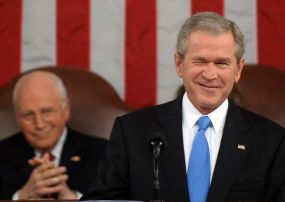 https://madnessatthegates.files.wordpress.com/2017/12/795fc0169ab7e0dea3d3279de0ded754-george-w-bush-quotes-ridiculous-quotes.jpg?w=570&h=406 570w,
https://madnessatthegates.files.wordpress.com/2017/12/795fc0169ab7e0dea3d3279de0ded754-george-w-bush-quotes-ridiculous-quotes.jpg?w=570&h=406 570w,  https://madnessatthegates.files.wordpress.com/2017/12/170915174518-trump-marks-pow-day-super-tease.jpg?w=576&h=324 576w,
https://madnessatthegates.files.wordpress.com/2017/12/170915174518-trump-marks-pow-day-super-tease.jpg?w=576&h=324 576w,  https://madnessatthegates.files.wordpress.com/2017/12/unknown.jpeg?w=150&h=114 150w,
https://madnessatthegates.files.wordpress.com/2017/12/unknown.jpeg?w=150&h=114 150w,  https://madnessatthegates.files.wordpress.com/2017/12/woody-allen-cinematheia-com_.jpg?w=452&h=254 452w,
https://madnessatthegates.files.wordpress.com/2017/12/woody-allen-cinematheia-com_.jpg?w=452&h=254 452w,  https://madnessatthegates.files.wordpress.com/2017/12/v1-bjsymtk4mza7ajsxnzu1mjsxmjawozu3njs0mzi.jpeg?w=150&h=150 150w,
https://madnessatthegates.files.wordpress.com/2017/12/v1-bjsymtk4mza7ajsxnzu1mjsxmjawozu3njs0mzi.jpeg?w=150&h=150 150w,  https://madnessatthegates.files.wordpress.com/2017/12/john-wayne.jpg?w=686&h=388 686w,
https://madnessatthegates.files.wordpress.com/2017/12/john-wayne.jpg?w=686&h=388 686w, 


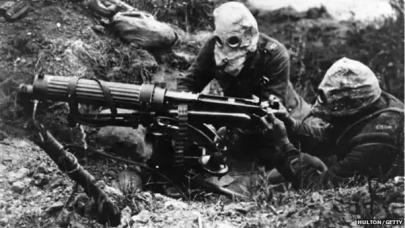
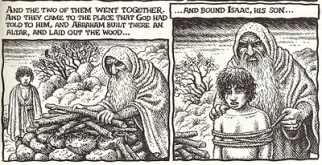
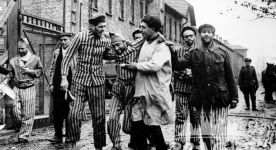


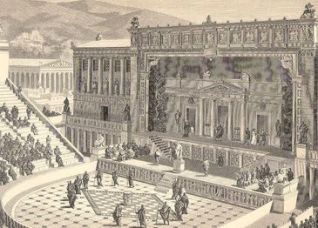
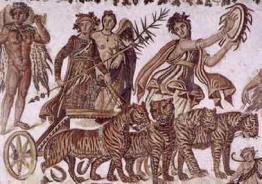




 https://madnessatthegates.files.wordpress.com/2017/07/demarkis-stamsberry-x750.jpg?w=642&h=482 642w,
https://madnessatthegates.files.wordpress.com/2017/07/demarkis-stamsberry-x750.jpg?w=642&h=482 642w, 
































